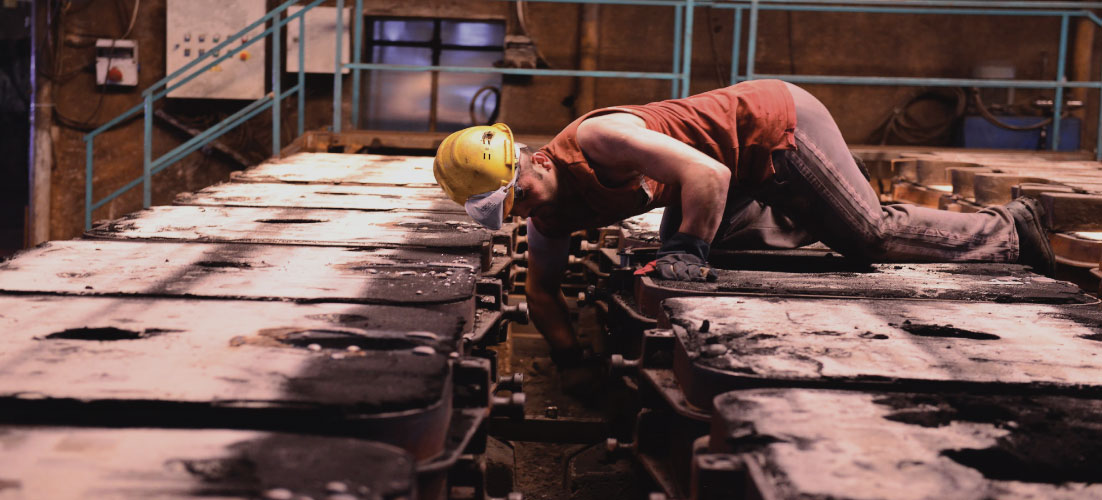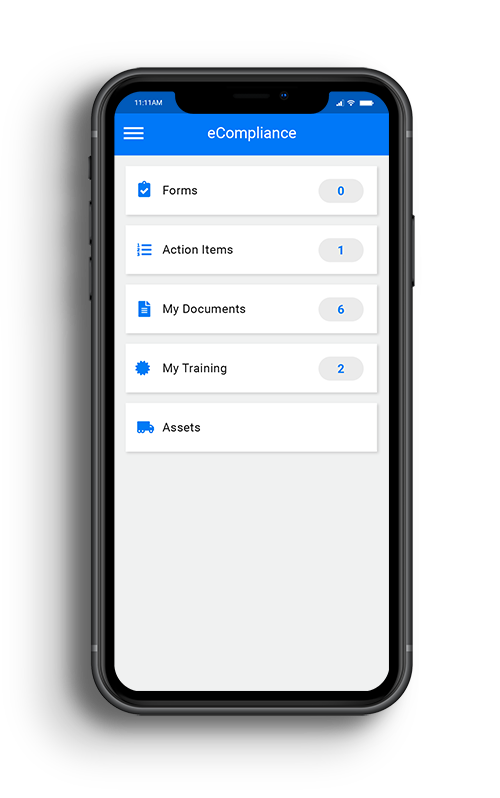
Share this Post
PUBLISHED
February 13, 2023
READ TIME
6 Minutes
WRITTEN BY
![]() Dina Adlouni
Dina Adlouni
Dina is the resident Content Writer at EcoOnline North America . When she’s not writing about health and safety, you’ll find her enjoying a cup of tea while watching her favorite sitcom.
How to prevent fatigue at the workplace
The rate of incidents and injuries increase by 30% during night shifts, compared to shifts during the day according to the Occupational Safety and Health Administration (OSHA). Moreover, OSHA also states there is a 37% increase in the risk of injury when employees work 12 hours a day.
Worker fatigue is an invisible hazard at the workplace which could increase the chance of incidents and accidents. When employees are tired, they are more prone to make mistakes and possibly put others or themselves in danger. This can lead to lost time and productivity, an increase in injuries or illnesses, as well as much more.
Read on as we dive deeper into:
- Why identify the causes of fatigue in the workplace?
- 7 tips to prevent fatigue at the workplace
- Why work with EcoOnline
Why identify the causes of fatigue in the workplace?
Long working hours, demanding or stressful work, interrupted sleep and much more are all causes of fatigue on the job site. As mentioned above, this can lead to several negative outcomes such as an increase in the rate of injuries or incidents on site, more downtime or lost time leading to less productivity and money lost, as well as hefty fines depending on the incident.
According to the National Safety Council (NSC) if an employer has 1,000 employees or more, they could lose more than a million dollars a year because of fatigue. This includes the cost of workers not being present, those who are present but not productive, and medical costs.
In 2005, an explosion occurred at an oil refinery in Texas. The BP Texas City incident left 15 workers dead and 180 workers with injuries. One of the contributing factors to this major incident was worker fatigue. After investigations were conducted, the US Chemical and Hazard Investigation Board (CSB) discovered that one of the operators had worked 12-hour shifts for 29 days straight, according to EHS Daily Advisor. The night-time operator had also worked consecutive 12-hour shifts for 33 days. This is a recipe for disaster.
As an employer, you must be avoid such conditions at all costs and be on the lookout for signs of fatigue in the work environment to help avoid harmful outcomes. Here are just some of the many things you should be wary of while on the job site to help identify fatigue:
- Tiredness or sleepiness
- Irritability or moodiness
- Lack of productivity
- Little motivation
- Difficulty concentrating or focusing
8 tips to prevent fatigue at the workplace
In addition to staying vigilant in the work environment, we wanted to share the following tips to help you prevent worker fatigue. The health and safety of your employees is your first priority, so consider the following:
1. Implement balanced schedules
Make sure all employee schedules are balanced with reasonable working hours. Avoid scheduling long and/or consecutive shifts where workers can easily be fatigued and overworked. It’s also important to keep the schedule consistent at the workplace. Inconsistency could lead to interrupted sleep patterns and more exhaustion, as it is interrupting the body’s natural circadian rhythm.
2. Have enough employees to conduct the work
At times, employers hire the bare minimum that may be needed to complete a specific project. This could lead to increased working hours and stress to get the job done. Always hire enough employees to conduct the work that must be completed, so as to avoid fatigue in the workplace and lower the rate of incidents or injuries.
3. Provide frequent breaks and time off
Another great way to avoid worker fatigue is to provide frequent breaks and time off. When employees are working consistently for long periods of time, they can quickly become exhausted and/or burnt-out. This raises the chances of making a mistake or causing an accident. Incorporate break times into their schedule and encourage them to take their allotted time off.
4. Thank about ergonomics
Ergonomics can be described as the design of certain tools and processes at the workplace and how this contributes to employee efficiency. Consider the ergonomics of your workplace as this could be contributing to worker fatigue and even injury. The Occupational Safety and Health Administration recommends certain standards and processes be implemented to reduce such risks. To learn more, read our blog: Workplace Injuries & OSHA Ergonomic Standards.
5. Provide water stations and encourage a well-balanced diet
Having a well-balanced diet and staying hydrated can help give you energy and improve your quality sleep time. Provide several water stations at the workplace and encourage healthy eating habits so your workforce has adequate amounts of energy throughout the day.
6. Encourage employees to report their fatigue
Consider having a system where employees can report if they are feeling too tired or weary to complete their job task. Another option is to have an alert set up on a digital safety solution, which notifies you when a person has clocked in and when their shift must end. This will help management and senior leadership stay on top of worker fatigue at the workplace and allow them to make the necessary adjustments needed to avoid the risk of an incident.
7. Promote healthy sleep habits
Conduct a meeting where you discuss the importance of avoiding worker fatigue at the workplace and use this time to also discuss healthy sleep habits. This can include creating a bed time routine which can help you wind-down and relax. Avoiding blue lights from your tv and phone just before going to bed, can also help improve the quality of your sleep.
8. Promote physical and mental health and wellness
Exercising regularly and being mentally healthy can help prevent worker fatigue. Exercise helps to give the body more energy and improves your health. It can also help to improve the quality of your sleep at night. Not only is physical activity important, but mental health and wellness can also play a part in avoiding fatigue. Depression and anxiety can affect sleep patterns making them irregular or insufficient, so make sure that workers are mentally healthy to have a more productive workday.
Why Work with EcoOnline?
eCompliance, part of EcoOnline Global, can help you create a safer work environment and cultivate a stronger safety culture. Digitize and centralize all documentation to gain greater visibility into the strengths and weaknesses of your safety program. Pinpoint gaps and prioritize the areas that need to improved through streamlined procedures. Assign corrective actions and set up notifications and alerts to key stakeholders to create accountability. This will help you strengthen your safety culture, as employees know the value they play in creating a safe work environment.
Conduct effective root cause analysis using our safety solution to help you get to the true source of incidents. With our robust reporting engine, you uncover trends and patterns and whether or not worker fatigue is an issue at your workplace. This can help you work towards implementing methods to improve this to avoid potential accidents or incidents.
Having a digital safety solution can also help you avoid worker fatigue by setting up safety meetings and toolbox talks to help employees discuss and learn more about the ways to prevent this at the workplace. Assign eLearning courses on the topic to raise awareness and promote a well-balanced workload and sleep habits.
To learn more, fill out the form below or speak to one of our EcoOnline representatives.
Learn How You Can Get EcoOnline
Complete this form and one of our safety experts will be in touch.

